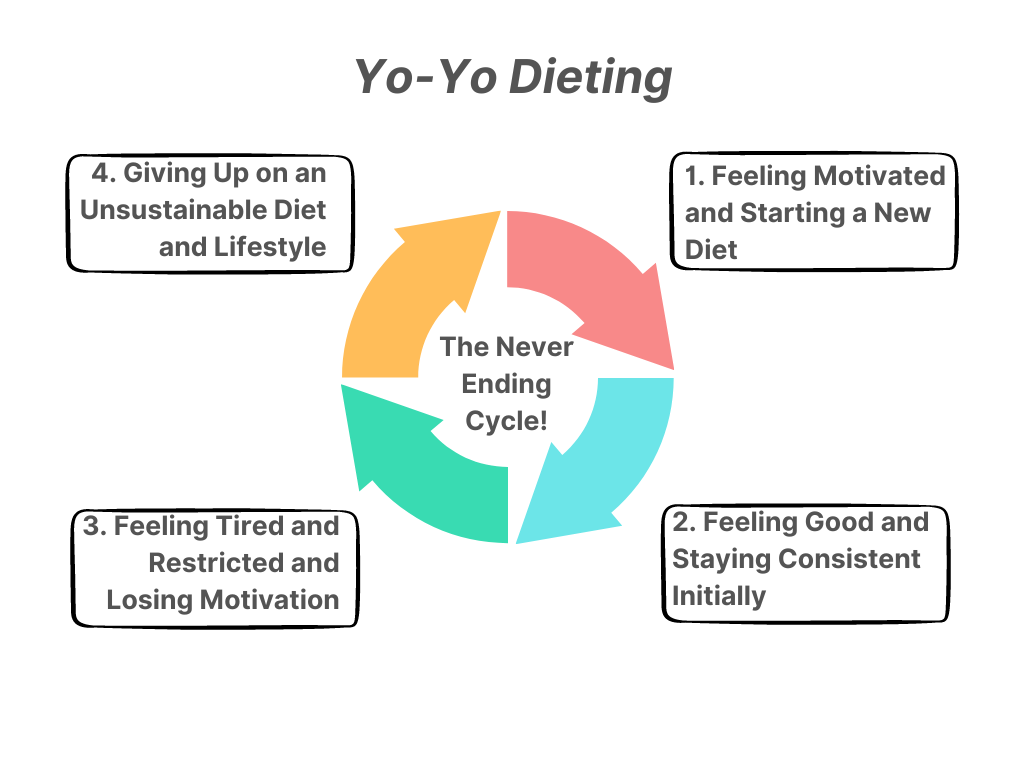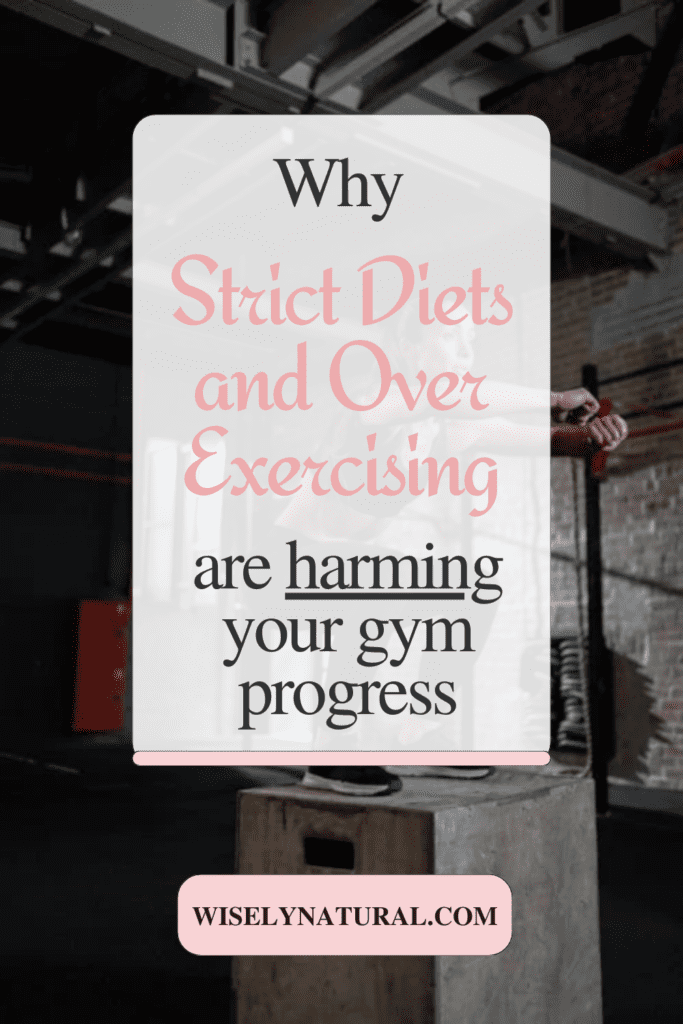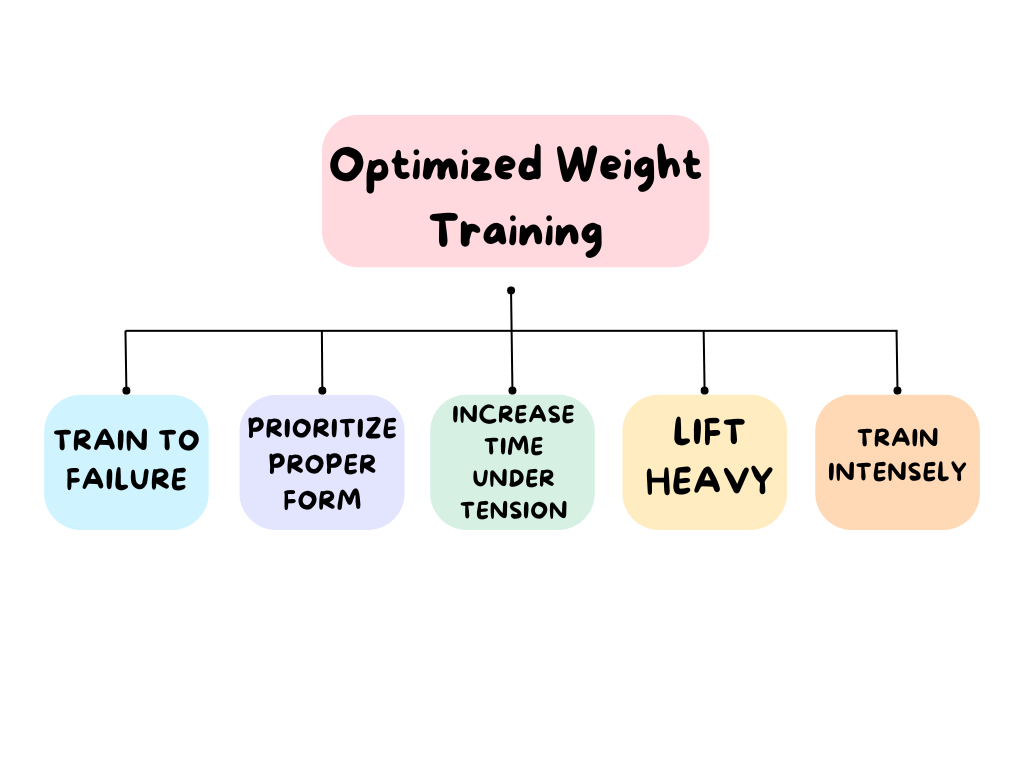
For so many of us active women out there, it’s so common for us to feel like we need to do more to see more results.
Don’t believe me? Let me know if this sounds familiar.
You constantly feel like you need to workout more. Spend even more time in the gym. Do more exercises per session. Cut down your calories even more each day. And so on, and so on, in order to see the results you want to see.
But what if I told you sometimes doing more can be counterproductive?
Or that you can even slow down your results and progress by doing too much?
Unfortunately, a lot of us nowadays fall into the cycle of constantly doing more to see more results in the gym.
But instead, we end up harming our results (and ourselves) in the process.
In this post, I want to explore all the reasons why strict diets and over-exercising are actually harming your results in the gym.
And what it is that you can do instead to make more efficient progress.
In this post you’ll find:
Why doing more in the gym isn’t always better for women
Now we know that doing more in the gym isn’t always better, but why?
Why isn’t it better to constantly be pushing ourselves harder and doing more to see the results we want to see?
I mean, it seems like the more we’re doing, the better results we’ll get and the quicker we’ll get these results.
Which is understandable. We’re constantly conditioned to believe that with most things in life, the more you put in, the more you’ll get out.
Although this is mostly true, and a very good mindset for anyone who loves the hustle, it’s not so true in the case of your fitness and health.
That’s because things become a little trickier when we’re dealing with the health and well-being of our own bodies.
What exactly happens when you start doing too much in the gym?
Although doing more might seem like the better option, this isn’t always the case.
Especially for us women, we’re always encouraged and conditioned to do more.
The pressure is constantly on to workout more, eat less, diet more, lose more fat, and so on.
But all of this can take an extreme toll on our bodies.
That’s why doing more in the gym becomes counterproductive when we start doing too much.
Doing too much is an unsustainable lifestyle
When we start doing too much in the gym, we put our body’s under tons and tons of pressure everyday.
We start doing so much, trying to rush through the process and make extreme changes in our lives.
However, this is extremely unsustainable for ourselves and our bodies.
And this is true for almost everything we do in life.
Without easing in to any major lifestyle changes, we’re likely to risk “shocking” our minds and our bodies.
I put “shock” in quotes because no, we aren’t actually going into shock. But we are shocking our systems in a way.
And with this shock comes resistance, extreme stress, and unsustainability.
Unsustainable changes lead to slower progress (or no progress at all)
Because of the shock and everything that comes with it, trying to make changes that are too extreme is a great way to counteract all the effort you’re putting in.
Think about it, you can’t really expect your body to make instant, extreme changes and then the whole journey to go smoothly afterwards.
That’s just not how our bodies work.
Doing this, you’d be setting yourself up to struggle to maintain your new lifestyle changes, and likely end up quitting in the near future.
Not at your own fault though.
Simply because the changes you were trying to make changes that were too instant and too extreme.
And on top of all of that, for the amount of time you’re able to maintain these lifestyle changes, your body will resist most of the changes in itself that comes with them.
For example, if you were trying to lose fat but undereating and over-exercising, your body would kick into survival mode and refuse to let go of any additional fat it has.
Since energy is now scarce, your body tries to maintain whatever it has left.
Think about all the “yo-yo” dieters out there
A prime example of unsustainable changes leading to unsustainable progress are all the yo-yo dieters out there.
Yo-yo dieters are typically people who hop on all the new, extreme fad diets, only to end up quitting and restarting over and over again.
Why? Because these diets are too extreme, and too unsustainable.
And, with all this yo-yoing, starting and quitting over and over again, you make just about no progress.
And the progress you do make, you usually un-do because you made the progress too quick. So you’re body isn’t able to sustain the changes.

That’s why it’s so important for us to remember that when it comes to our health and fitness progress, our journey is a marathon, not a sprint.
Overworking in the gym can cause numerous health issues
Not only is doing too much unsustainable and can hinder our progress, it can also cause tons and tons of health issues.
To speak more generally for now, being too extreme in the gym and with our diets can cause numerous physical health issues, but also mental health issues.
Hyper-fixating on any type of things in life can be harmful.
But this is especially true when that thing we’re hyper-fixating on is something like our weight, our size, our progress, or our appearance in general.
This can take a huge toll on our health, bodies, and well-being. And those aren’t things we want to mess with.
The biggest issues that arise from doing too much in your routine

Hormonal imbalances from overworking
Especially as women, hormones play a huge role in just about every aspect of our lives.
Seriously, our hormones regulate almost everything in our bodies.
I’m talking stress levels, hunger, our ability to lose weight, our ability to build muscle, our sleep, blood pressure, metabolism, skin and hair health, and so much more.
I’m sure now, you can see why it’s so critical for our hormones to be balanced.
The exercises you do and the diet you eat both play a major role in balancing your hormones.
However, this also means that both your exercise and your diet play a huge role in any hormonal imbalances as well.
When you everything is done correctly, you have a recipe for balanced, healthy hormone levels.
Whereas by being too extreme with everything, you’re at a great risk for offsetting your hormones and leading to hormone imbalances.
Increased cortisol levels from excessive training and undereating
One hormone in particular that our exercise and diet can regulate, or offset, is our cortisol.
Cortisol is the hormone that regulates our bodies stress response.
As you can imagine, too much cortisol means too much stress, and too much of a stress response.
Unbalanced cortisol levels causes:
- Decreased metabolism
- Increased blood pressure
- Excess stress and anxiety
- Inability to lose weight (especially around the abdomen) and/or weight gain
- Poor sleep
- Fatigue
- Inflammation
- And so many more bad things that we don’t want for our bodies
Overtraining that hinders your progress
On top of that, doing too much in the gym can actually lead to what’s known as over training.
Over training is when you exercise too much in the gym, without allowing your body enough time to rest and recover.
As you can imagine, this can become very dangerous.
Especially for women who weight train, rest is extremely important. And really, for anyone who trains intensely enough in the gym.
Rest is when your body has the chance to grow and recover from your previous workouts.
On top of that, rest is when you’re results actually have the chance to come in.
Because of this, rest is just as important for your progress as working out is, if not even more important.
That’s why overtraining can be extremely harmful for both your body and your progress.
Overtraining eventually leads to burnout in your workout routine
When you combine over training with not enough rest, you become extremely susceptible to burnout.
Exercise induced burnout is when your body becomes overly exhausted and struggles to maintain your level of activity and lack of rest.
Burnout is especially common for those who overexercise, undereat, or both.
Symptoms of burnout include:
- Fatigue
- Irritability
- Loss of progress or no progress
- Increased injuries from working out
- Loss of interest in working out
- Maintaining fat levels
- Reduced muscle gain
- And more
Burnout has a pretty big impact on tons of different aspects of your life, both inside and outside of the gym. Because of this, it’s not something you want to overlook.
Burnout tremendously impacts your energy levels, performance, strength, and even your desire to workout.
As I’m sure you can probably imagine, none of this is good for your progress in the gym.
So if you recognize these signs of burnout in yourself, or maybe suspect you’re over training or under eating, consider toning things down a bit.
Remember, you’re in this for the long run and are looking to maintain this new lifestyle.
Taking a step back and giving yourself a breather is completely OK and even beneficial for your long term progress.
Doing too much can cause you to hit plateaus and stop progressing
Not only can doing too much cause you to become burned out, it can also cause you to hit plateaus and even stop progressing all together.
We already talked a lot about over exercising and how that can lead to burnout, fatigue, and exhaustion.
So it makes sense that all of this would cause your body to stop progressing.
However, it would seem like a more strict diet might give you the best results as quickly as possible.
But in this case, that isn’t the case.
Why under-eating and strict dieting can cause plateaus
If you aren’t eating enough food or getting in enough nutrients, there’s really just no way for your body to be able to progress.
Think about it, if you aren’t eating enough food to sustain your body under a normal amount of activity, how would you be eating enough to sustain your body during intense physical activity?
But your body needs extra energy in order to be able to progress and do better than it did before.
So not eating enough means no energy for your body to recover, no energy for your body to grow additional muscle, and no energy for your body to gain any additional strength.
This puts a huge pause and even a potential stop to your progress all together.
On top of that, under eating for too long can actually make weight loss harder, and cause your body to hold on to additional fat.
Like I mentioned earlier, the less food you give your body and the more activity you do, the more energy becomes scarce. And when one of your body’s resources becomes scarce, it’s survival instincts kick in to try and conserve this resource.
In this case meaning food, calories, and fat.
And if undereating isn’t enough, imagine combining that with over exercising.
You’d have a recipe for a tired, burned out, over worked body.
Meaning any muscle gains, fat loss, strength gains, or progress will slow down and maybe even stop.
The best fitness tips for women to create more balanced exercise plans
At this point, we’ve dove pretty deep into why being too extreme in terms of your fitness can be bad.
And why we want to avoid doing too much of what we think is a good thing.
Now, since I always talk about the importance of training intensely and the impact of your diet on your fitness results, you might be confused thinking what is it that you should be doing?
Don’t worry, I won’t leave you hanging.
Here, we’ll dive into what you can do instead to make your workouts much more effective and sustainable long-term. Without overworking yourself and rushing to the quickest results.
Optimize your time in the gym for the most effective workouts
The first adjustment you can make to avoid over working and keep things sustainable starts with your workout routine.
I see a lot of people spending hours in the gym and still not seeing as much progress they want to see.
Does this mean they should add another hour to the two hours they already spend there a day?
Well, probably not.
If you find yourself in this situation, there’s much better ways to make your workouts more effective and optimize your routine for the best results.
You can actually do this without spending any additional time in the gym each day.
The best way to optimize your time spent in the gym is to increase the intensity of your workouts.
Doing this will allow you to do less in the gym, and get more out of it.
Well, not necessarily less, since you can do fewer exercises however you do have to do them with more intensity.
How to optimize your workouts as a weightlifting woman
For example, for all my weightlifters out there, instead of doing 4 sets of 12 on each exercise, you can do 2 or 3 sets to failure and still achieve the same results.
If not even better results.
But that’s not even the only way. There are tons and tons of other ways to optimize your workouts and make them more effective.
While spending even less time in the gym than you do now.
The best ways to optimize your weightlifting workouts are to:
Increase your time under tension – Increasing your time spent in the eccentric portion of an exercise is the best way to stimulate maximum muscle growth.
Prioritize proper form – Proper form is essential to maximize every exercise you do.
Learn how heavy you should be lifting based on your goals – Depending on your goals, you can determine how heavy you should be lifting and how many sets/reps you should be doing at each weight.
Train to failure – Training to failure is one of the best ways to push your muscles and increase the intensity of your workouts.

Create a sustainable calorie deficit for slow and steady fat loss
Unfortunately, I know a lot of us women are often times encouraged to eat as little as possible.
Mainly because we’re encouraged to be thin, lose fat, and maintain a small figure.
However, eating too little can actually cause your body to hold on to weight.
This is mainly because eating too little for long periods of time can cause your metabolism to adjust.
So your old deficit eventually becomes your new maintenance.
Because of this, it’s much more effective to create a small calorie deficit, to maintain slow, long term weightless.
A deficit of about 200 to 500 calories below your maintenance is generally the recommended deficit.
This is much more sustainable long term, and leads to healthy, consistent fat loss.
While still allowing you to have enough calories and energy for effective workouts and recovery.
Ease into your journey with slow, gradual changes
Because our journey is a marathon, not a sprint, we’re mainly looking to make long term, sustainable changes.
Changes that we can maintain throughout our lives, while still finding balance and enjoyment for everything else that’s important to us.
That’s why I always emphasize that slow, gradual changes are a thousand times better than rushed, extreme changes.
Keep in mind that everything that’s worthwhile in life takes time, effort, and patience.
Especially when it comes to your fitness and health.
Takeaways
Although doing more in your routine might seem like the better option, faster progress, better results, doing too much can actually be counterproductive.
Eventually, it can even become harmful to both ourselves and our gym progress.
Especially for us active women, since there are a lot of factors that contribute to our weightless, muscle gains, gym progress, and overall health.
By doing too much, we put ourselves at risk for burnout, plateaus, exhaustion, and loss of progress.
Because of this, instead of being too extreme, the best way for you to see progress is actually by optimizing your workouts and setting yourself up for slow, gradual progress.
By doing this, you’ll be able to stay committed and consistently work towards your gym goals.
More of my posts on women’s weightlifting and fitness:
Why Weightlifting Won’t Make You Look Bulky